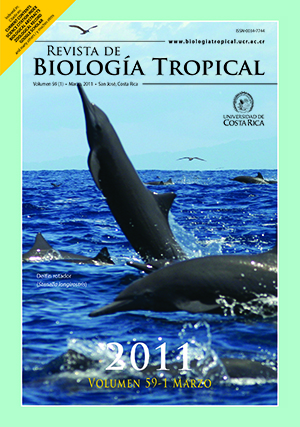Abstract
Mountain ecosystems have shown slow mineralization activity due to weather conditions, and to some groups with arthropods with special roles. The Collembola is an important group for litter fragmentation, showing different distribution patterns. The objective of the present study was to determine the diversity of Collembola along a volcano altitudinal gradient. For this, four sampling expeditions evaluated four altitudinal levels (I=2 753, II=3 015, III=3 250 and IV=3 687 masl) in Iztaccihuatl Volcano, from November 2003, and March, June and August 2004. Shannon diversity (H’), Pielou evenness (J’) and Simpson dominance (1/λ) indices were calculated. The similarity between the associations of springtails between the sampling sites was evaluated by a cluster analysis using the Pearson correlation coefficient, as distance and the unpaired arith-metic averages (UPGMA) as amalgamation method. A total of 24 075 springtails, distributed in 12 families, 46 genera and 86 species was collected. The higher species abundance was found at the altitudinal area II. The lowest diversity value was recorded in IV, while the higher diversity values were found in III. Significant dif-ferences between Shannon indices were found between zones II-III (t0.01, 187=4.11, p<0.05) and between III-IV (t0.01, 187=3.8, p<0.05) according to modified t-test. When considering sampling dates, no significant differences were found. The dendrogram showed that in composition the level I is more homogeneous throughout the year. In conclusion, a statistically significant seasonal variation in springtail abundances was not found, but it was observed that, the lower altitude (I) resulted more homogeneous along the studied period, followed by level II and III. There is a particular assemblage of springtails community in each altitudinal area studied; in general, the sites with low slope resulted more diverse in Collembola communities. These results show that there are important factors such as altitude, vegetation type and microhabitat heterogeneity that may affect the distribution of springtails communities along an altitudinal gradient.
Comments

This work is licensed under a Creative Commons Attribution 4.0 International License.
Copyright (c) 2011 Revista de Biología Tropical






